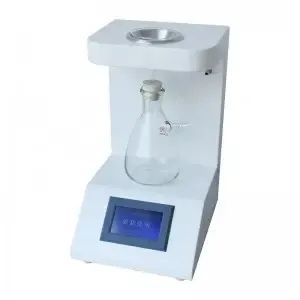 English
English


hipot insulation test
Understanding the Hipot Insulation Test A Key to Electrical Safety
In the realm of electrical safety, the hipot insulation test stands out as a crucial procedure that ensures the reliability and safety of electrical devices. The term hipot is derived from high potential, and the test is used to assess the insulation strength of electrical equipment. As technology advances and electrical systems become increasingly complex, understanding and implementing the hipot insulation test has never been more vital.
What is the Hipot Insulation Test?
The hipot insulation test is performed by applying a high voltage to the insulation of an electrical device to determine its ability to resist electrical breakdown. During this test, a voltage that is significantly higher than the normal operating voltage of the device is applied between the conductive parts and the ground or between different conductive parts. The primary goal is to identify weaknesses in insulation that may lead to failures or electrical hazards.
There are two main types of hipot tests the dielectric withstand test and the insulation resistance test. The dielectric withstand test applies a high voltage for a specified duration, typically ranging from 1 second to several minutes. The insulation resistance test, on the other hand, measures the resistance of the insulation material at a specific test voltage, usually 500V or 1000V DC.
Why is the Hipot Test Important?
The importance of the hipot insulation test cannot be overstated. Electrical insulation is critical for preventing unintentional electrical conduction, which can lead to equipment damage, electrical shock, or even fire. By identifying any potential failures in insulation before equipment is deployed, the hipot test helps manufacturers and users avoid catastrophic incidents.
In industries such as healthcare, manufacturing, and telecommunications, where electrical safety is paramount, the hipot test serves as a vital tool in compliance with regulatory standards. Entities like Underwriters Laboratories (UL) and the International Electrotechnical Commission (IEC) mandate stringent tests to ensure consumer safety. The hipot test is often a requirement for certification processes, enabling consumers to trust the products they use.
How is the Hipot Test Conducted?
hipot insulation test

Conducting a hipot test involves several key steps
1. Preparation First, the equipment must be prepared by ensuring all power sources are disconnected and all components are accessible. The test setup must be free of any conductive materials that could affect the results.
2. Set Parameters The test voltage and duration are selected based on the specifications of the device being tested. These parameters are usually derived from industry standards and the operating conditions of the equipment.
3. Testing The hipot tester applies the high voltage to the insulation. During this phase, the tester continuously monitors current flow. If the insulation fails, excessive current will flow through, indicating a breakdown.
4. Analysis After the test, the results must be analyzed. A successful test shows little to no current flow, while a failure indicates insulation demarcation and potential risks.
5. Documentation Proper documentation of the test results is essential. This not only includes the test results but also any observations made during the process.
Conclusion
The hipot insulation test is an indispensable procedure in ensuring electrical safety across various industries. By gauging the strength of insulation materials, it helps prevent electrical failures, protects users from hazards, and ensures compliance with safety standards. As we continue to integrate advanced technologies into our electrical systems, rigorous testing and assurance of insulation integrity will remain critical to safeguarding lives and maintaining operational reliability. Embracing these testing methods is not just a regulatory requirement; it is a commitment to safety and quality that ultimately benefits manufacturers, consumers, and society as a whole.
-
Differences between open cup flash point tester and closed cup flash point testerNewsOct.31,2024
-
The Reliable Load Tap ChangerNewsOct.23,2024
-
The Essential Guide to Hipot TestersNewsOct.23,2024
-
The Digital Insulation TesterNewsOct.23,2024
-
The Best Earth Loop Impedance Tester for SaleNewsOct.23,2024
-
Tan Delta Tester--The Essential Tool for Electrical Insulation TestingNewsOct.23,2024





